Potatoes are grown everywhere in Russia. But about how to collect the maximum crop of tubers and what kind of vegetation period only experts know. Therefore, before you grow potatoes, you need to familiarize yourself with all the factors on which its productivity depends.
Content
The relationship between the variety of potatoes and the timing of its collection
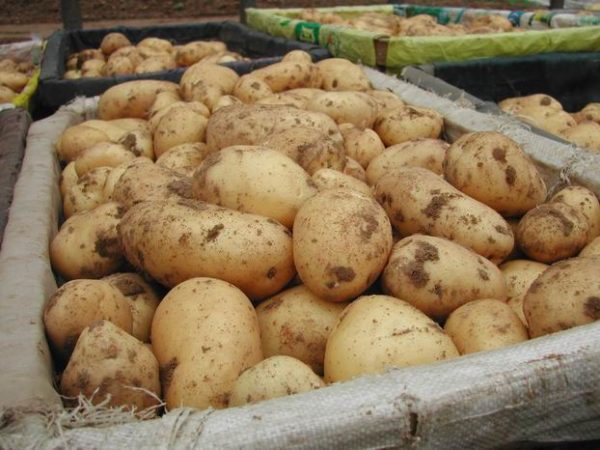
Due to the fact that in different regions the planting period of a vegetable may differ due to climatic features, then potato ripening period defined differently. In addition, in order to get a rich harvest in a particular area, one should also consider the variety of potatoes before planting.
The potato growing season and its ripening rate can be divided into the following categories:
- early grade - you can dig out 50-65 days after planting;
- the vegetation period of medium early potatoes is 65-80 days;
- mid-season variety grows from planting to harvest from 80 to 95 days;
- medium-late potato from sowing to full ripening is in the ground for 95-110 days;
- the timing of growing late-ripening tubers is at least 110 days.
Therefore, it is necessary to choose a variety of potatoes for each case separately. In addition, among the main factors affecting the collection period, one can also distinguish the growing season, taste, resistance to diseases, and the ability to stay winter.
Potato varieties ripening
Vegetation of tubers has several stages:
- from the moment of planting and the appearance of the first seedlings to the formation of buds;
- from vegetation to the last stage of the development of green mass;
- from the beginning of the slowed growth of potatoes and the development of tops to its complete dying off, during which tubers form.
Potato growth from planting to harvesting takes a certain number of days. Basically, early ripe varieties of vegetables ripen much faster than late ripe ones.
Early ripe varieties
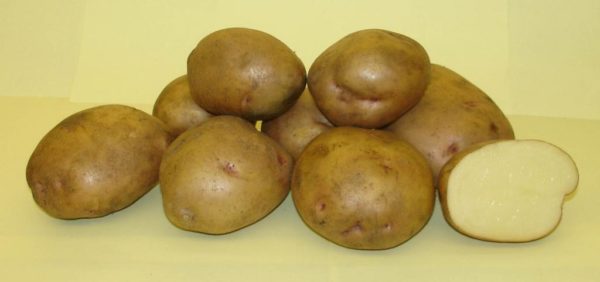
When growing early varieties, the potato ripens after 65 days. Consequently, the tuber will reach its maturity in July. If you plant it at the first sign of a warm spring, the seedlings will appear in May.
Early ripening varieties have advantages, since the risk of getting late blight is reduced. This is possible due to the fact that you need to remove the tops at the end of summer. Early potatoes grow rapidly, but cannot boast of high yields, since it contains small amounts of starch and other dry substances. Among the main varieties of precocious potatoes can be identified Alena, Ariel, Zhukovsky early.
This type of vegetable is suitable for central Russia.
Middle Early Varieties
Vegetable ripens from 65 to 80 days. Potato after planting in fertile soil is growing rapidly, but requires regular and plentiful watering. Popular varieties:
- Ryabinushka;
- Scarlett
- Romano
- Ilyinsky.
In the composition of such potatoes, more than 50% of the dry matter is starch.
Mid-season varieties
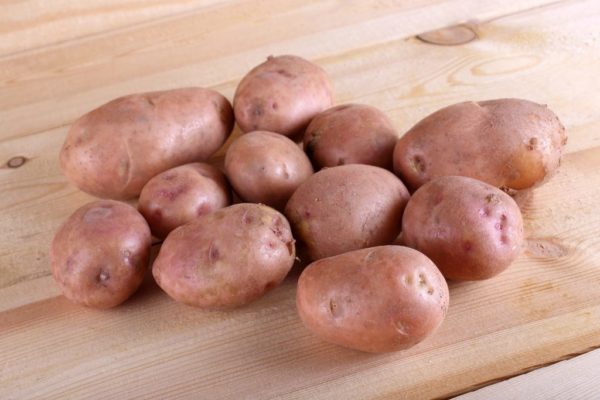
Tuberous plant belonging to that species will give a rich harvest, and it ripens in early August. It is necessary to land it on the site in early May, when the land is fully warmed up.
Vegetable growers prefer the varieties Dubrava, Sineglazka. They contain a lot of starch fibers, so they are delicious.
Mid-late grades
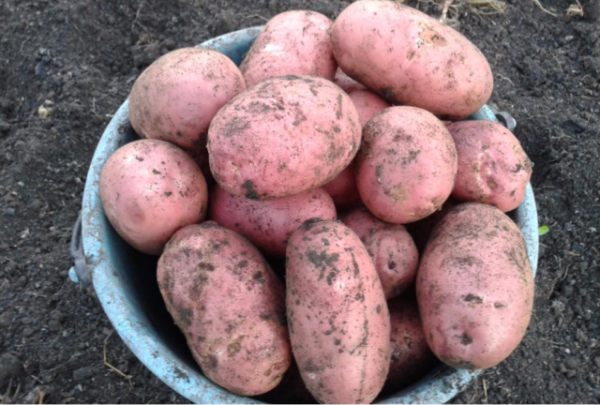
Medium late potatoes ripen after flowering, and the duration of the growing season is 4 months. Therefore, it is not worth digging it up earlier than this - the tuber has not matured. During this time, the required amount of solids accumulates in the culture. You need to dig up the ripened tubers in September, but not earlier than 120 days after planting. Plant seed in the middle or end of May.
Summer residents prefer this type of potato because of the taste, good yield and long storage. The most famous varieties are Zdabytak, Zhuravlinka, Asterix.
This type of potato is disease resistant. It is better to plant it on southern soil, so that it is fully ripe. If the crop needs to be grown in central Russia, then the bushes need to be processed from late blight.
Late ripening varieties
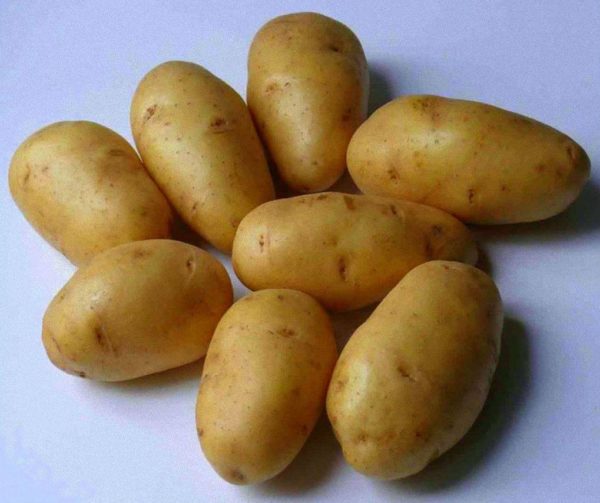
This type of potato is characterized by long storage with preservation of benefits and nutrition for the person. Planting crops should be made in the second or third decade of May. Harvest will be possible from the first autumn month. The main rule that gardeners adhere to is that such a variety of potatoes should grow for at least 120 days.
The plant is resistant to frost, since in the last spring month the probability of a strong drop in the thermometer is reduced to zero. Late ripening tubers are an excellent option for planting in the northern regions of the Russian Federation. The most famous varieties are Lorch, Atlant, Saturn.
Factors affecting the maturity of potatoes
It so happens that tubers of the same kind of potato begin to form at different times. This means that they have different ripening dates. This fact is influenced by various factors.
In particular, the climate has a strong effect on the formation of vegetables. Due to rains, it can get late blight, and at high air temperatures, root crops stop growing. But you can avoid such consequences and accelerate the maturation of potatoes, if you adhere to the technology of cultivating the culture.
Grade
Each type of tubers differs in terms of maturity and speed. Therefore, the purchase of seed material must be familiar with its features: the ripening period, planting rules and care for potatoes.
The right choice of potato affects how long it goes through all stages of development. It should also take into account what the gardener grows potatoes for. For example, early ripe varieties are popular, but the yield is low and, due to the low solids content, its storage duration is short. The cultivation of this type of culture in order to obtain commercial benefits has its advantages. For example, in the southern regions of the country you can get two crops a year, and in the northern - there is the possibility of cultivation.
Middle and late crops do not allow you to quickly get a crop, but they are tastier, the number of potatoes is larger and can withstand storage throughout the winter.
Growing region
Before planting the tubers, one must take into account not only its ripening period, but also the climatic characteristics of the region where the vegetable will be grown. In areas where spring frosts are not uncommon, cultivation is better to postpone.
When choosing the optimal conditions for potatoes (weather, soil composition, variety), you can increase productivity. In addition, he will develop immunity to various diseases, and quality will increase.
Landing time
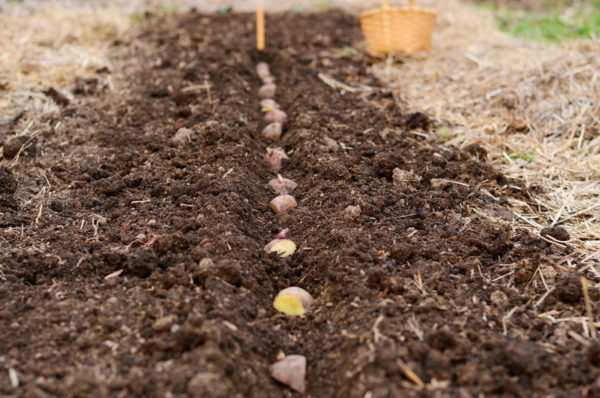
In the case when the potato was planted too early than is necessary for a particular variety, it is likely that the crop will die from frosts, which are not uncommon in spring. Therefore, it is necessary to study in advance the characteristics of the selected tubers and its features, take into account the optimal period for sowing.
Planting tubers later is also not a guarantee of a rich harvest, as the soil will be dry.
Fertilizer application
Abuse of top dressings not only does not accelerate the vegetable growing season, but can even harm the future crop. Organic fertilizers in large quantities can adversely affect the quality of potatoes, because in its composition the content of nitrates will increase.
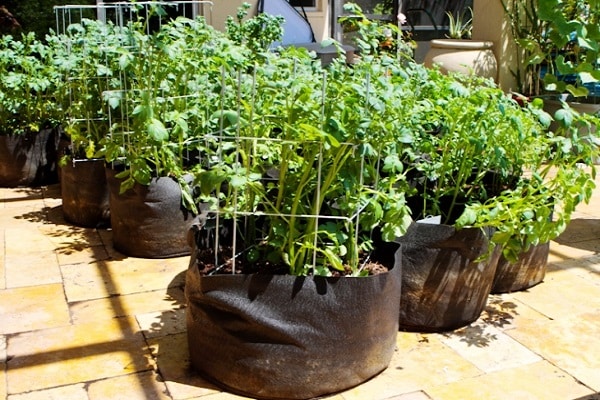 You may be interested in:
You may be interested in:With a lack of minerals in the earth, the growth and development of the vegetable is accelerated, but quality and productivity suffer. The use of mineral and organic top dressing potato growing season is lengthened, so its growth can be extended until autumn. If various inorganic compounds are present, the tubers are formed much later.
Moisture and air temperature
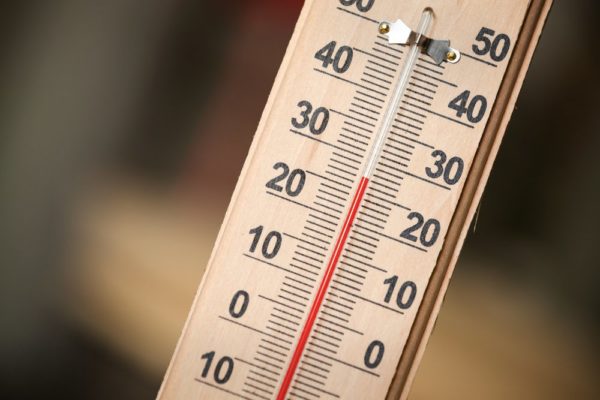
Abuse of watering leads to slow flowering, because the tubers are completely saturated with moisture, and their development is activated. But with a lack of fluid, the soil becomes dry, and the growth of the tops stops. After it dries, the vegetable develops rapidly, and its harvesting time is reduced. But the crop is small, and the potatoes are small.
Sudden changes in temperature can adversely affect the quality of the crop and as a result, the number of small tubers will increase. At high temperatures, potatoes ripen faster, especially during vegetation and tuber formation.
Potato growing season
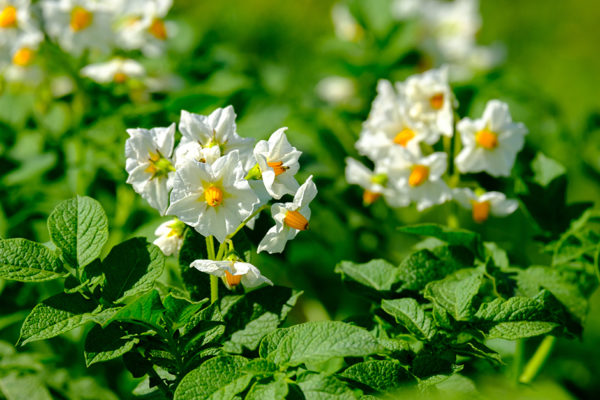
By biological feature we mean several stages that a plant goes through in the process of ripening. During the first phase after planting, which lasts from 20 to 25 days, seedlings ripen. Then comes the flowering stage, which is divided into four stages:
- budding - the tops reach their peak and begin to gradually die. Activation of root formation;
- vegetation - the formation of buds above the ground coincides in time with budding in the ground. The development of underground tubers begins;
- growth is the main longest stage of flowering, during which the tuber cells grow systematically. This phase lasts 40-65 days, which depends on the variety of culture and other factors that affect the ripening speed;
- dying of green mass - accounts for 60-90 days after planting tubers.
The total growing season lasts 70-140 days. The duration of this phase depends not only on the type of vegetable, but also on the conditions in which it grows.
Ways to bring potato to maturity
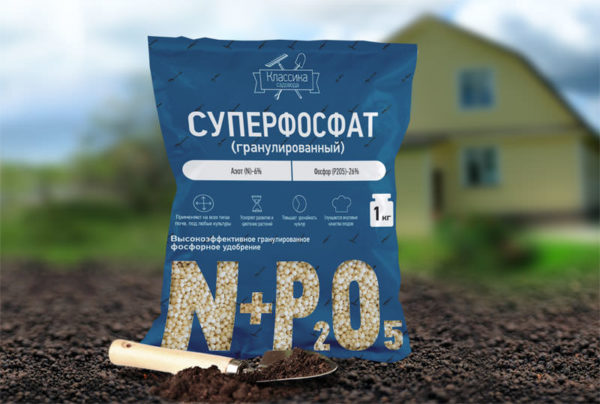
The desire to get a ripe culture as early as possible can result in failure.Trying to grow potatoes as quickly as possible can lead to poor product quality and a small crop.
Late planting or adverse weather conditions greatly increase the flowering period. In that case, accelerated ripening methods should be used to get good potatoes with excellent qualities:
- getting rid of tops is the simplest and most effective method, which should be used a week before harvesting;
- the use of copper sulfate - to spray the plant with a solution, for the preparation of which the proportions should be maintained: 5 g of substance per 1 liter of water. Processing should be carried out 14 days before harvest, so that the green mass has time to dry, and the tubers form;
- treatment of plants with chlorate - this method will be effective if you use it after a season with prolonged rains. To prepare the solution, stir 20 g of magnesium chlorate in 1 liter of liquid. Thanks to this, tubers form, and the tops dry out;
- use of superphosphate - to prepare a solution, it is necessary to dissolve 2 kg of superphosphate in a bucket of water;
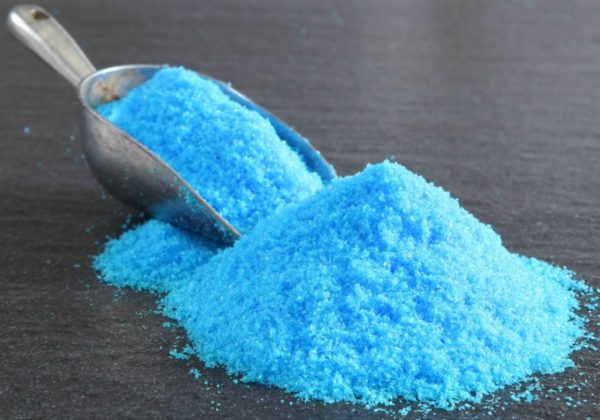
- germination of tubers before planting in the ground - you need to carry out the procedure in a room that is well ventilated. Daytime temperature should be 15 degrees with a plus sign, and in the evening - not lower than 7 degrees with a plus sign in Celsius. Vegetable will sprout in 12-28 days. After the appearance of the first sprouts, they need to be treated with a solution for which in 10 liters of liquid dilute 15 g of sodium chloride and ammonium nitrate and 55 g of superphosphate. After 48 hours, pour potatoes with plain water. Thanks to this, after planting, it will grow faster;
- wilting - lay out the tubers in one row and after 10 days, eyes form on it. After this, you can begin to land.
These procedures will lead to the fact that the signs of potato ripening appear much earlier, so you can dig out delicious young potatoes without fear of damaging it.
When to dig potatoes
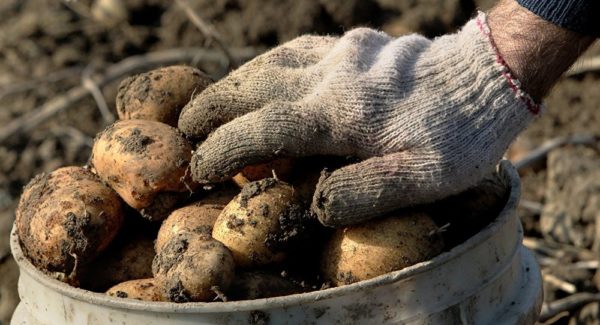
Each variety of culture has its own ripening time. Understand that the tubers are ready to harvest will help the main signs of ripening:
- The tops have dried - in the early varieties this occurs in mid-summer. You can harvest after all the potato tops on the plot have dried.
- Weather conditions - it is necessary to dig up tubers on a dry sunny day.
- Sowing - if a vegetable is planted at the end of May, then ripe fruits can be harvested no earlier than September. You can also determine the willingness of a vegetable by the color and condition of the tops.
When digging up tubers, it is necessary to take into account not only its variety, planting time and signs of ripening, but also the weather. Air temperature should be in the range of 12-17 degrees Celsius with a plus sign. Due to this, the product will not deteriorate during storage.
If precipitation is predicted by the weather forecast, then you need to quickly get rid of dry grass and collect potatoes. Otherwise, high humidity at the end of flowering will adversely affect the culture, which will lead to the development of fungal infections.
Harvested potatoes need to be dried in the fresh air, but avoiding direct UV rays. After that, send for storage in a dark place with good ventilation, high humidity.
Reviews
Ilona, Moscow Region
I have been growing potatoes for sale for many years, so it is important for me that the vegetable is beautiful, ripe and of high quality. Therefore, when planting, I take into account weather conditions, ripening speed and time of harvest. Fertilizing is also important, so I use organics. But it is important not to overdo it, otherwise the result will be the opposite.
Igor, Arkhangelsk
My garden plot is located in a lowland, so I have to accelerate the maturity of potatoes. There are many different tricks, but I use topping. Thanks to him, the tubers begin to form and mature quickly. Harvest at the same time good. This technique does not affect the taste and quality of potatoes.
The ripening period of tubers depends on the variety. But gardeners can speed it up using a variety of methods. The main thing is to follow all the recommendations and the potato harvest will not suffer.




 Description and description of varieties in Belarus with a photo
Description and description of varieties in Belarus with a photo Do I need to pick flowers from potatoes: why do they do it
Do I need to pick flowers from potatoes: why do they do it When to dig potatoes: timing and availability of new potatoes
When to dig potatoes: timing and availability of new potatoes How to grow a good potato crop: various methods and methods, planting and care
How to grow a good potato crop: various methods and methods, planting and care